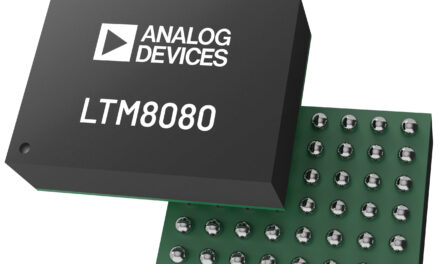 While the EMC Defence Standard 59-411 provides guidance on a risk assessment process for successfully achieving electromagnetic compatibility (EMC) when integrating military off-the-shelf (MOTS) and commercial off-the-shelf (COTS) products, correctly performing the assessment remains a challenge.
While the EMC Defence Standard 59-411 provides guidance on a risk assessment process for successfully achieving electromagnetic compatibility (EMC) when integrating military off-the-shelf (MOTS) and commercial off-the-shelf (COTS) products, correctly performing the assessment remains a challenge.
Jean-Louis Evans, managing director at TÜV SÜD Product Service, a global product testing and certification organisation, and at its sister company, TÜV SÜD BABT, comments
The risk assessment process of Defence Standard 59-411 contains four key steps to assess if any protection, such as shielded racks and filters, is needed to reduce equipment susceptibility to harsh defence electromagnetic environments and enhance compatibility with sensitive systems such as military radio.
The electromagnetic environment
The target electromagnetic environment is usually specified in the User Requirement Document (URD) or System Requirement Document (SRD). It will usually be one of the default electromagnetic environments within Def Stan 59-411 (e.g. a ship below-decks environment), but may be tailored to a specific environment or to compatibility with specified systems. Once the environment definition is known, the adequacy of the MOTS/COTS EMC performance can be evaluated.
Evaluation of EMC compliance
Obtaining the evidence of EMC compliance is one of the major challenges of the risk assessment process. The presence of CE Marking to European Directives is not enough to identify levels of performance and therefore the EMC standards, to which the MOTS/COTS equipment complies, need to be identified from the manufacturer’s EU Declaration of Conformity, test report, certificate or specifications.
Using the guidance in Def Stan
59-411, a ‘gap analysis’ process can be used to determine whether the MOTS/COTS EMC compliance evidence is more or less stringent than the Def Stan 59-411 test limit. Any shortfalls identified help specify additional protection required such as shielding or filter attenuation. This can be a time consuming, costly and complex exercise, often taking the user away from their core expertise or comfort zone, so the use of specifically designed gap analysis tools is recommended.
Functional criticality
The risks identified during the gap analysis process must now be compared to the criticality of the equipment and platform environment impact in which the COTS/MOTS equipment will be used. If any unacceptable risks are identified, they must then be mitigated. For example, if the equipment has a critical function itself, adequate immunity is required. Secondly, if the equipment is co-located with other sensitive critical equipment, adequate emission control is required.
Mitigation of unacceptable risk
There are two options. Retest the MOTS/COTS equipment to determine compliance with Def Stan 59-411. This is technically a good approach, as any additional protection can be properly specified and over-protection will be avoided. However, the disadvantage is the cost of additional testing.
Remedial re-design can be achieved by adding the appropriate protection ‘barriers’ to reduce the coupled RF fields or currents that the equipment could be exposed to, or could emit to, below the levels it was originally required to meet.
Many manufacturers now offer suitable RF shielded racks and enclosures for this purpose, which allow the MOTS/COTS equipment to be housed without modification therefore preserving the validity of its CE Marking. Additional filters and transient protection can also be accommodated within the enclosure. If the equipment itself is modified to achieve EMC, it is considered to have become ‘modified off the shelf’ equipment and needs to meet the EMC Directive with CE marking as a ‘new apparatus’ in its own right.
The applicability of CE Marking to military equipment was clarified by the European Commission in April 2012 with the statement:
‘Equipment which falls within the scope of the Radio & Telecommunications Directive, EMC Directive or Low Voltage Directive, shall be compliant with the applicable Directive(s) and bear CE marking’.
Member states can exclude military equipment from the scope of Directives pursuant to Article 346 (ex.296) of the Treaty on the Functioning of the European Union on the basis of the protection of national security interests. This is not a decision for the manufacturer. Further guidance on the compliance of military equipment with the EMC Directive was published by CENELEC in report TR50538 in 2010.
Applying the EMC Directive to defence projects requires careful management to avoid unnecessary duplication of compliance-testing – once for Def Stan 59-411, and once for CE Marking, which will of course incur additional costs.
The current EMC Directive 2004/108/EC is due to be replaced in 2013 due to the revision of nine CE Marking Directives as a result of the EU ‘New Legislative Framework’. These are administrative changes to enforce the requirements for Notified Body accreditation and market surveillance relating to the marketing of products. Under the EMC Directive, Notified Body assessment is an optional third-party certification of the technical documentation and could prove invaluable in the reduction of risk of non-compliance where gap-analysis or other non-testing assessment methods have been used, ensuring that the resulting products are legally placed on the market and acceptable for delivery, particularly for high-value projects.
TÜV SÜD

